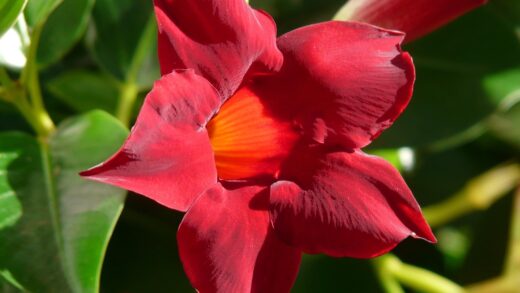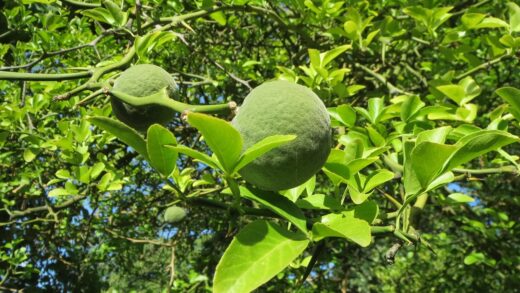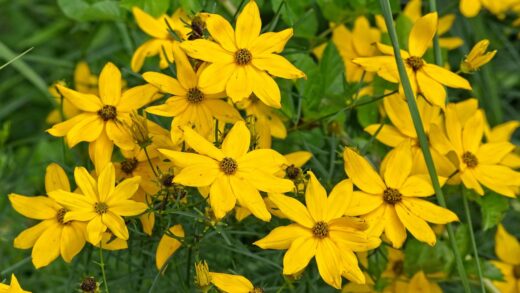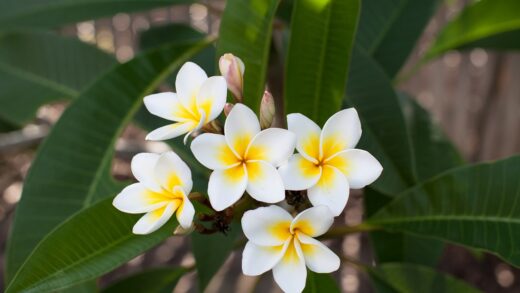The practice of pruning and cutting back rose campion is a simple yet highly effective technique for shaping the plant, promoting its health, and maximizing its ornamental appeal. Unlike complex pruning required for shrubs or trees, the maintenance of this perennial is straightforward and primarily involves two key activities: deadheading during the flowering season and cutting back after the main bloom period has concluded. A proper understanding of the timing and purpose of these actions allows the gardener to significantly influence the plant’s performance, encouraging a longer floral display, controlling its spread, and maintaining a tidy, attractive clump of foliage throughout the growing season.
The most frequent pruning task associated with rose campion is deadheading, which is the removal of spent flowers. This process serves a dual purpose. Firstly, it is an aesthetic intervention, tidying the plant’s appearance by removing the faded, browning blossoms. Secondly, and more importantly from a horticultural perspective, it prevents the plant from setting seed. By removing the flowers before seed development, the plant’s energy is redirected from reproduction back into producing more flowers, thereby extending the blooming period, often by several weeks. This simple, repetitive task is the key to a continuous summer display.
Beyond the ongoing task of deadheading, a more substantial cutting back or shearing of the plant is often beneficial once the first major flush of flowering has waned, typically in mid-summer. This rejuvenation pruning involves trimming back the entire plant, including the flower stalks and some of the upper foliage. This action prevents the plant from becoming leggy and untidy after its peak bloom and encourages the growth of a fresh, dense mound of its attractive silver basal foliage, which will remain an ornamental feature through autumn and into winter.
Finally, end-of-season decisions regarding cutting back are a matter of garden style and practical considerations. While some gardeners prefer to cut the stems back to the basal rosette in autumn for a neat winter appearance, others choose to leave the stems and seed heads standing for architectural interest and to provide food for birds. Regardless of the specific timing, these simple pruning techniques are fundamental tools for managing the health, appearance, and longevity of rose campion in the garden.
Deadheading for prolonged bloom
Deadheading is arguably the most important pruning task for maximizing the floral display of rose campion. The primary biological drive of an annual or biennial plant is to produce seed and ensure the next generation. By removing the spent flowers before they can develop seeds, the gardener effectively tricks the plant into continuing its flowering efforts. The plant senses that its reproductive mission has not yet been accomplished and responds by producing more buds in a renewed attempt to set seed. This simple intervention can transform a few weeks of bloom into a month-long or even longer spectacle.
More articles on this topic
The process of deadheading is simple. Once a flower has faded, its vibrant colour will dull, and the petals will begin to shrivel. To remove it, follow the individual flower stem down to the point where it meets a larger stem or a set of leaves. Using a pair of clean, sharp scissors or pruning shears, snip the stem off at this junction. It is best to be proactive and remove the flowers as soon as they begin to look tired, as this ensures the plant’s energy is redirected as quickly as possible.
Regularly attending to this task, perhaps once or twice a week during the peak blooming season, will yield the best results. It not only encourages more flowers but also keeps the plant looking clean and vibrant. Faded, brown flowers left on the plant can detract from the beauty of the fresh blooms and can become mushy and unattractive after rain. This small investment of time pays significant dividends in the overall aesthetic quality of the garden border throughout the summer.
Deadheading also serves the crucial function of controlling the plant’s spread. Rose campion is a notoriously prolific self-seeder. If left to its own devices, a single plant can produce hundreds of seeds, leading to a dense carpet of seedlings the following spring. While this might be desirable in a wild or cottage garden setting where a naturalized look is intended, it can be problematic in more formal or tightly planted beds. Diligent deadheading is the most effective way to prevent unwanted seedlings and keep the plant population in check.
Rejuvenation pruning in mid-summer
After the initial, spectacular flush of flowers in late spring and early summer begins to fade, the rose campion plant can start to look tired and leggy. The long flower stalks may begin to sprawl, and the overall shape of the plant can become untidy. This is the ideal time to perform a rejuvenation pruning, also known as “cutting back” or “shearing.” This more significant pruning effort revitalizes the plant, encouraging a flush of fresh foliage and sometimes even a smaller, secondary wave of blooms later in the season.
More articles on this topic
The technique involves cutting back the entire plant by about one-third to one-half of its height. Using hedge shears for a large clump or hand pruners for individual plants, trim off the spent flower stalks and the upper portion of the leafy stems. The goal is to create a more compact, rounded mound of the basal foliage. While this may seem drastic and will leave the plant looking bare for a short period, the response is usually swift. Within a couple of weeks, new, vibrant silver leaves will emerge, creating a dense and highly ornamental clump.
This mid-summer shearing is particularly beneficial for the plant’s appearance for the remainder of the growing season. The resulting fresh mound of silvery foliage serves as an excellent, textured ground cover and a beautiful foil for later-blooming perennials and annuals. This keeps the rose campion contributing to the garden’s beauty long after its main flowering period is over. Without this pruning, the plant can look straggly and unkempt through the late summer and autumn months.
It is important to time this pruning correctly. It should be done as the first major wave of flowering is clearly declining, but not so late in the season that the plant does not have time to regrow before autumn. Typically, sometime in July or early August is appropriate in most temperate climates. After cutting the plant back, it is beneficial to water it well to help reduce stress and encourage the new growth to emerge quickly. This single act of maintenance can dramatically improve the plant’s aesthetic contribution to the garden for the second half of the season.
Controlling self-seeding
While the tendency of rose campion to self-seed can be a desirable trait, allowing it to naturalize and fill gaps, it can also become a nuisance if not managed. The plant’s prolific nature means that without intervention, it can quickly spread beyond its intended boundaries and may even start to outcompete less vigorous neighboring plants. Pruning, specifically deadheading, is the primary and most effective method for controlling this spread.
To prevent self-seeding, it is absolutely essential to remove all spent flowers before they mature into seed pods. A single flower head can produce a multitude of tiny black seeds, so vigilance is key. The gardener must be diligent in snipping off the faded blooms throughout the entire flowering season. If even a few flowers are missed and allowed to form seed heads, they can disperse enough seed to result in dozens of new seedlings the following year.
If the goal is not to eliminate self-seeding entirely but simply to manage it, a more selective approach can be taken. One can allow a few of the last flower heads of the season to remain on the plant to mature and set seed. This provides a small number of new plants to ensure the continuation of the colony without it becoming overwhelming. Once these selected seed heads have dried and turned brown, they can be crushed over the area where new plants are desired, or they can be collected for sowing in other parts of the garden.
If unwanted seedlings do appear in the spring, they are relatively easy to identify by their distinctive fuzzy, grey-green leaves. They are also easy to remove when they are young. They can be pulled by hand or gently hoed out of the soil. Alternatively, these volunteer seedlings can be viewed as an opportunity; they can be carefully lifted with a trowel and transplanted to new locations to expand a planting or to share with other gardeners. Managing self-seeding is a balance between control and embracing the plant’s natural tendency to propagate itself.
End-of-season cleanup
As the growing season draws to a close in autumn, a final pruning decision must be made regarding the remaining stems and foliage of the rose campion. The approach taken often depends on the gardener’s aesthetic preference and the overall style of the garden. One option is to perform a thorough cleanup, cutting all the stems and old flower stalks back to the low-lying basal rosette of leaves. This creates a very neat and tidy appearance for the winter months.
This autumn cut-back has several practical advantages. It removes any potentially diseased plant material from the garden, reducing the chances of pathogens overwintering. It also improves air circulation around the crown of the plant, which is crucial for preventing winter rot, especially in damp climates. For gardeners who prefer a clean slate in the spring, this autumn cleanup means there is less work to do when new growth begins. The basal rosette itself should not be cut back, as its semi-evergreen leaves will persist and photosynthesize during milder winter periods.
The alternative approach is to leave the plant standing over winter. The dried stems and seed heads can provide significant architectural interest in the winter garden, catching frost and snow in beautiful patterns. They also offer a valuable food source for seed-eating birds, such as goldfinches and siskins, which will cling to the stalks to extract the tiny seeds. This approach is well-suited to more naturalistic or wildlife-focused gardens.
If the stems are left for the winter, they should then be cut back in late winter or very early spring. This cleanup should be done before the new growth begins to emerge from the base of the plant. Waiting too long can make it difficult to remove the old, dead stems without damaging the tender new shoots. Ultimately, both autumn and spring cleanup approaches are valid, and the choice depends on the desired balance between winter aesthetics, wildlife support, and garden tidiness.


















